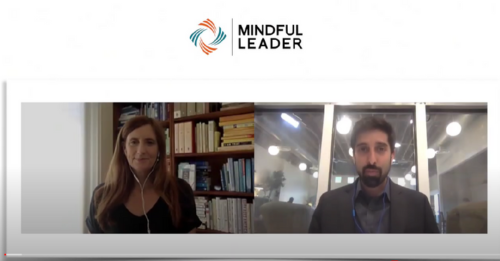Advanced Meditation Practice with Diana Winston

Mindfulness has gained significant popularity in recent years, with its positive impact on mental well-being and focus becoming widely recognized. In a session at Mindful Leader’s 2019 Mindfulness at Work Summit, Diana Winston, the director of mindfulness education at the UCLA Mindful Awareness Research Center, shared valuable insights into various meditation practices. Her discussion centered around moving from focused awareness to natural awareness through a spectrum of mindfulness practices. This article will explore these practices and how they can enhance your meditation experience.
The Spectrum of Awareness Practices
Diana introduced the concept of a "spectrum of awareness practices," comparing it to different types of photography lenses. Just as a camera lens can capture narrow, focused images or wide, panoramic views, mindfulness practices can vary from narrow focus to expansive awareness.
- Focused Awareness: The first practice is focused awareness, where attention is concentrated on a specific object, most commonly the breath. The meditator gently brings their attention back whenever the mind wanders, building stability and clarity.
- Investigative Awareness: Moving along the spectrum, Diana introduced investigative awareness. In this practice, the meditator notices other objects of meditation that arise, like bodily sensations or emotions. Instead of immediately returning to the breath, they allow the attention to rest on these experiences for a while before returning to the primary object.
- Choiceless Awareness: Choiceless awareness is the next step, where the meditator becomes flexible and open to all arising experiences, without focusing on any specific object. This allows the mind to move from one object to another, bouncing around in a more expansive state of awareness.
- Natural Awareness: Finally, the broadest end of the spectrum is natural awareness. Here, the focus shifts from objects to the awareness itself. The meditator rests in the present moment, effortlessly allowing all experiences to arise and pass without effort to control or fixate on anything.
Benefits of Exploring the Spectrum:
Diana highlighted three essential reasons to explore the spectrum of awareness practices:
- Overcoming Stagnation: Exploring different practices helps individuals who feel stuck or stagnated in their meditation. By experimenting with various awareness techniques, one can find new approaches to deepen their practice.
- Enhancing Meditation: Understanding the different types of awareness can help individuals recognize and appreciate the various qualities of their meditation experiences. This insight provides a broader perspective on their mental states during meditation.
- Accessing Natural Awareness: The natural awareness practice, which is often underrepresented in mainstream mindfulness, offers a sense of profound calm, joy, and lightness. By becoming familiar with this state, one can experience mindfulness as an effortless state of being.
Conclusion
Mindfulness is a vast field with numerous practices to explore. By understanding the spectrum of awareness practices, individuals can choose the approach that resonates best with them at a particular time. Diana Winston's teachings open doors to a more profound and enriching meditation experience, empowering practitioners to cultivate a sense of ease, joy, and natural presence in their lives. Whether you are a seasoned meditator or new to mindfulness, trying out these practices can offer a fresh perspective on your journey toward inner peace and well-being.
Want to see more insightful talks from Mindful Leader? Visit our YouTube page to watch more and make sure to subscribe so you never miss a new one!

0 comments
Leave a comment